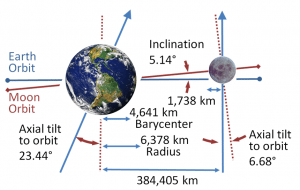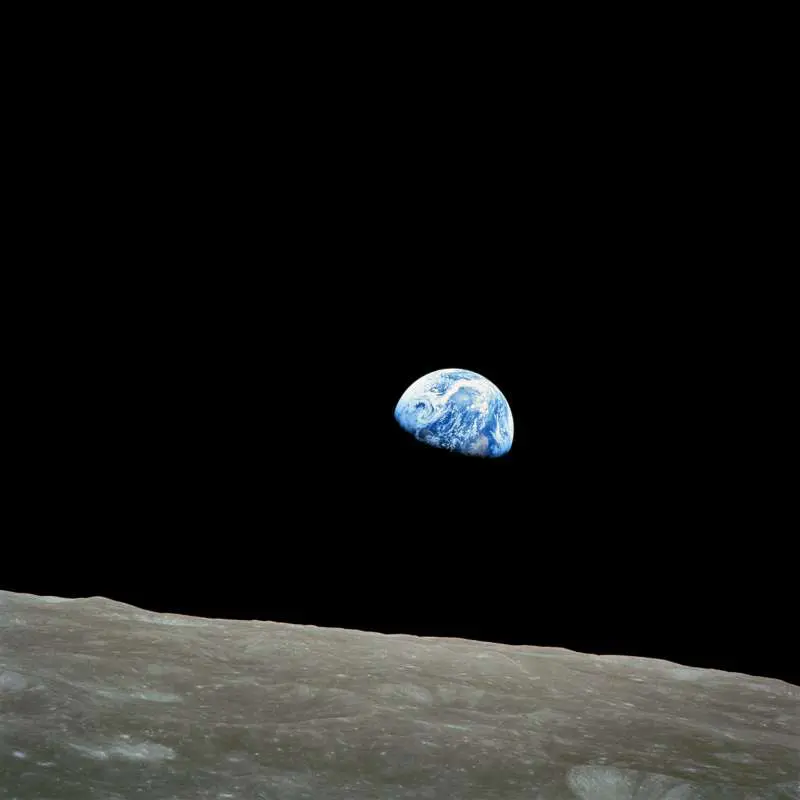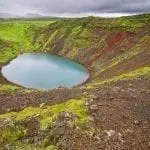Overview
In this third article on Our Amazing Moon we will examine the uniqueness of our moon’s orbit about the earth. Every moon in our solar system either orbits its planet in the planet’s orbital plane, or in an oddly skewed plane. Only earth’s moon orbits within a narrow band centered on our equator and only slightly offset from the ecliptic plane.
The Lunar Orbital Plane
The first part of our discussion of the Moon in this article will center on the NASA diagram1 shown in Figure 1 below.

The earth along with the other seven major planets revolves around the Sun in a disk known as the Ecliptic Plane2. That plane is shown on-edge in Figure 1 above labeled as “Earth Orbit” in blue. Since the eight major planets in our Solar System orbit closely to the Ecliptic Plane many secular texts and references cite this as evidence of a process known as accretion (the formation of planets and other bodies in a solar system resulting from matter coalescing after star formation). However, this is a false scientific assumption due to the fact that this process has never been observed or otherwise verified by any scientifically testable means3.
Only earth’s moon orbits within a narrow band centered on our equator and only slightly offset from the ecliptic plane.
The Moon orbits the Earth at a slight angle of 5.14° off the Ecliptic Plane. The length of the lunar orbit about the Earth is approximately 27 1/3 days. During that time it crosses the Ecliptic Plane twice, once from above and once from below. This means that the Moon crosses the Ecliptic Plane about once every 13 2/3 days. Every time the Moon crosses the Ecliptic it is in the same plane as the Sun and the Earth. However, only when it is located between the Sun and the Earth, will it produce a solar eclipse. Likewise, when the Moon is crossing the Ecliptic and the Earth is between the Moon and the Sun the result will be a lunar eclipse. This is the reason why we do not have solar eclipses every day and lunar eclipses every night somewhere on earth.
On the other hand, solar and lunar eclipses occur much more frequently than we might expect; because, most of us really only pay attention to them when they are about to happen in our geographic location. In fact, as of the time of the writing of this article there have been over 40 lunar eclipses (including 15 total) and 35 solar (including 10 total) in the 21st century. So the opportunities to view a total or partial occultation4 of the Sun or Moon around the world occur on a rather regular basis.
Another fascinating display of our Moon is that only one side faces the earth during its entire orbit. This is due to the fact that it takes the Moon as long to revolve about its own axis as it does to orbit about the earth. This process is known as Tidal Locking5.
As of the time of the writing of this article there have been over 40 lunar and 35 solar eclipses in the 21st century.
As we shall see in the upcoming section, even though our Moon is ‘tidally locked’ with the Earth we are still able to see about 58% of its total surface over time. This is due to an orbital cycle that occurs every 8.85 years.
Lunar Apsidal Precession
Figure 2 below is a still rendition of a portion of an orbital process known as apsidal precession. In this view we are looking down on the earth from directly above the Ecliptic Plane (though neither the Earth nor the Moon in this diagram is positioned as such). Notice how each orbit of the Moon ‘swings’ around a bit in the direction of its orbit after each completed orbit. Eventually, the Moon will return to its original orbit after approximately 8.85 years.

From Figure 1 in the previous section we saw the Earth in one position with the angle of the lunar orbit at 5.14° to the Ecliptic. This resulted in an angle between the Moon’s orbit and the Earth’s equator of about 18.3° (some value are rounded). This angle, however, does not remain constant throughout the period of lunar apsidal precession, as Figure 3 below demonstrates.
Figure 3 – Lunar Precession. Click on the ‘Play’ button to view simulated motion.
Each ¾-second ‘tic’ represents one-tenth of the precession cycle (0.885 years, or about 323 days including ‘leap-days’). In each new view the Moon is shown at Earth Perigee (the closest point in that the Moon comes to the Earth in its orbit). The Earth is viewed from the same relative position so that we can observe how the lunar precession causes the orbital plane of the Moon to ‘wobble’ around the Earth’s axis – changing the angle with the equator over time.
In this rendering, the bottom ‘edge-on’ view shows us that the minimum angle (a little over 18°) between the Earth’s equator and the lunar orbital plane occurs at the start of the precession cycle, and increases to maximum (a little over 28°) at the midpoint of the precession cycle. The Lunar orbital plane is always at 5.14° to the Ecliptic6, however, the angle to the Earth’s axis and equator appear to change from a fixed point due to the ‘wobble’ during the precession cycle.
To visualize the ‘wobble’ that is caused by orbital precession of a satellite that is orbiting at an angle to another plane, think of the precession plane as a dish and the Ecliptic Plane as a large table. If you spin the dish on the table it will eventually begin to settle. At the point where the dish is nearly flat, but still steadily ‘wobbling’ on the table, you can look at the surface of the table on-edge and see the angle of the edge of the plate ‘wobbling’ too. The angle remains constant, however, it moves along the path of the plate so that the edge angle you are viewing changes over time.
This ‘wobbling’ of the lunar orbital plane relative to the Earth coupled with the slightly elliptical shape of the Moon’s orbit allow us to view a total of 58% of moon during its orbital cycle. In fact, time-lapse photography from a fixed point on the Earth taken over many months during a full moon shows that the Moon appears to be ‘rolling’ slightly in all directions as it is viewed cyclically from slightly different angles.
Furthermore, when the Moon is at Apogee (its furthest point from the Earth) it is about 14% smaller and 30% in the sky than when it is at Perigee7,8.
Summary
Given the precision with which our Moon has been placed in our heavens, it becomes quite apparent that it has been placed there purposefully and specifically by our Creator. Not only does it serve a number of useful purposes (which we will continue to examine in future articles), but it also participates in some awe-inspiring displays in both our day and night skies.
“The heavens declare the glory of God; and the firmament sheweth his handywork.”
-Psalms 19:1
“And the heavens shall declare his righteousness: for God is judge himself. Selah.”
-Psalms 50:6
“The heavens declare his righteousness, and all the people see his glory.”
-Psalms 97:6
When we add to the information covered in this article (and that of the previous two articles) that this beautiful and delicate dance between the Earth, Moon, and the Sun is now occurring after the Fall as recorded in Genesis chapter 3, we can begin to appreciate the truly infinite scope of the Lord’s planning in Creation. Furthermore, we can only imagine how much more spectacular the heavens must have appeared before sin entered into Creation and disrupted the perfection of God’s Design that He called “Very Good”9. We have already seen that the Moon is useful for the telling of seasons (calendar record) and providing light at nighttime. In our next article we shall see how the Moon by its orbit, position, and significant mass regulates our ocean tides like clockwork.
In His Love,
Dr. Jack L. Burton
-Hebrews 11:1-3
References
(1) NASA Planetary Fact Sheets and associated satellite data sheets.
http://nssdc.gsfc.nasa.gov/planetary/planetfact.html
(2) TheSky Astronomy Software © 1984-2000. Software Bisque, Inc.
(3) Time and Date. Lunar Perigee and Apogee.
https://www.timeanddate.com/astronomy/moon/lunar-perigee-apogee.html
End Notes
- NASA photos of Earth and Moon labeled with some data on orbits and tilts (public domain)
- Heavens-Above. Definition of the Ecliptic Plane.
http://www.heavens‑above.com/glossary.aspx?lat=0&lng=0&alt=&loc=&term=ecliptic+plane
- NASA states the process of accretion as factual absent of any observable proof or other evidence in its definition of the Ecliptic Plane. See:
https://www.nasa.gov/multimedia/imagegallery/image_feature_635.html
- In astronomy – A partial or complete blocking of one celestial body by another.
- Tidal Locking is not uncommon among moons and their parent planets in our Solar System. Pluto and Charon are ‘mutually’ tidally locked. The dwarf planet and its largest moon display the same face toward each other as they orbit one another. Most secular astronomy references assume this phenomenon is a result of one body ‘capturing’ another into its orbit; however, this process has never been observed or adequately demonstrated for massive celestial bodies.
- The Lunar Orbital Plane angle does vary slightly over a long period by a very small value, which is also cyclical.
- Time and Date. Lunar Perigee and Apogee. Supermoons & Micromoons.
https://www.timeanddate.com/astronomy/moon/lunar-perigee-apogee.html
- Observable and predictable features resulting from the orbital cycle of the Moon are, by themselves, enough to debunk any notion of a flat earth, solid sky, flat sky objects, or other nonsense associated with these ‘theories’.
- See Gen. 1:31.
Notes
- All Bible quotes in this article are taken from the KJV.
- Bible passages in double quotes (“) appear exactly as found in the KJV.
- Bible passages in single quotes (‘) have been modified for emphasis or ease of reading only (such as capitalization of pronouns referring to God, bolded text, or modernized punctuation, etc.) without altering the actual wording of the text.
Disclaimer: While to the author’s knowledge all of the information cited in the referenced material related directly to the content of this article is correct and accurate, the author in no way endorses any of the cited references in their entirety – especially where the material contained therein is in direct contradiction with the Creation account given in the Word of God.







